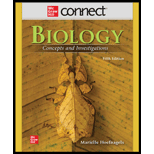
Concept explainers
Introduction:
The lymph capillaries are present in the lymphatic system. It is a colorless fluid. It contains nutrients and ions absorbed and assimilated from the interstitial fluid. This fluid flows through the capillaries and enters the blood circulation again. It contains the white blood cells, bacteria, pathogens and cancerous cells which enter from the blood.
Answer to Problem 1MCQ
Correct answer:
Lymph capillary contains fluids with various blood cells, bacteria, pathogens and cancerous cells. Therefore, option d. is correct.
Explanation of Solution
Reason for the correct statement:
The lymph capillaries contain colorless fluids which are rich in nutrients which enter these capillaries from the blood stream. The constituents include blood cells, bacteria, and cancerous cells.
Option d. is given as “All of the above are correct”.
As, “the lymph capillaries contain blood cells, bacteria and cancerous cells which are absorbed from the interstitial fluid”, is the right answer.
Hence, option d. is correct.
Reasons for the incorrect statements:
Option a. is given as “Bacteria”.
Bacterial cells enter the lymph but there are other cells like cancer cells and blood cells also. So, it is a wrong answer.
Option b. is given as “Interstitial fluid”.
Lymph capillaries contain cancer cells and bacteria absorbed from the blood stream. So, it is a wrong answer.
Option c. is given as “Cancer cells”.
Cancer cells are present in the lymph capillaries but other cells like pathogens and white blood cells are also present. So, it is a wrong answer.
Hence, options a., b., and c. are incorrect.
The lymph capillary contains blood, bacteria, interstitial fluid and cancer cells. These cells are absorbed from the interstitial fluid.
Want to see more full solutions like this?
Chapter 34 Solutions
BIOLOGY:CONCEPTS+INVEST.-CONNECT ACCESS
- What is the structure and function of Eukaryotic cells, including their organelles? How are Eukaryotic cells different than Prokaryotic cells, in terms of evolution which form of the cell might have came first? How do Eukaryotic cells become malignant (cancerous)?arrow_forwardWhat are the roles of DNA and proteins inside of the cell? What are the building blocks or molecular components of the DNA and proteins? How are proteins produced within the cell? What connection is there between DNA, proteins, and the cell cycle? What is the relationship between DNA, proteins, and Cancer?arrow_forwardWhy cells go through various types of cell division and how eukaryotic cells control cell growth through the cell cycle control system?arrow_forward
- In one paragraph show how atoms and they're structure are related to the structure of dna and proteins. Talk about what atoms are. what they're made of, why chemical bonding is important to DNA?arrow_forwardWhat are the structure and properties of atoms and chemical bonds (especially how they relate to DNA and proteins).arrow_forwardThe Sentinel Cell: Nature’s Answer to Cancer?arrow_forward
- Molecular Biology Question You are working to characterize a novel protein in mice. Analysis shows that high levels of the primary transcript that codes for this protein are found in tissue from the brain, muscle, liver, and pancreas. However, an antibody that recognizes the C-terminal portion of the protein indicates that the protein is present in brain, muscle, and liver, but not in the pancreas. What is the most likely explanation for this result?arrow_forwardMolecular Biology Explain/discuss how “slow stop” and “quick/fast stop” mutants wereused to identify different protein involved in DNA replication in E. coli.arrow_forwardMolecular Biology Question A gene that codes for a protein was removed from a eukaryotic cell and inserted into a prokaryotic cell. Although the gene was successfully transcribed and translated, it produced a different protein than it produced in the eukaryotic cell. What is the most likely explanation?arrow_forward
 Medical Terminology for Health Professions, Spira...Health & NutritionISBN:9781305634350Author:Ann Ehrlich, Carol L. Schroeder, Laura Ehrlich, Katrina A. SchroederPublisher:Cengage Learning
Medical Terminology for Health Professions, Spira...Health & NutritionISBN:9781305634350Author:Ann Ehrlich, Carol L. Schroeder, Laura Ehrlich, Katrina A. SchroederPublisher:Cengage Learning Biology (MindTap Course List)BiologyISBN:9781337392938Author:Eldra Solomon, Charles Martin, Diana W. Martin, Linda R. BergPublisher:Cengage Learning
Biology (MindTap Course List)BiologyISBN:9781337392938Author:Eldra Solomon, Charles Martin, Diana W. Martin, Linda R. BergPublisher:Cengage Learning Concepts of BiologyBiologyISBN:9781938168116Author:Samantha Fowler, Rebecca Roush, James WisePublisher:OpenStax College
Concepts of BiologyBiologyISBN:9781938168116Author:Samantha Fowler, Rebecca Roush, James WisePublisher:OpenStax College





